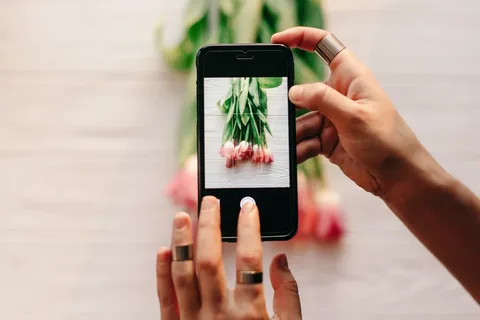
To construct a thriving photography Instagram account in 2025, taking pretty pictures isn’t sufficient you require strategy, consistency, branding, engagement, and deep understanding of how the platform functions. Instagram is now the go-to destination for photographers to display their work, gain followers, find clients, and even earn money from their hobby.
To grow your photography page, step one is to determine your niche. Rather than posting random photos of different subjects, determine what style or type of photography you wish to specialize in—portraits, landscapes, street, fashion, wildlife, travel, or product photography.
Having a niche tells your audience what they can expect and builds a loyal following. Having determined your niche, choose a distinctive and memorable username representative of your brand. Ideally, it’s short, photography-based, and memorable.
Pair it with a professional profile picture (either a logo or a simple self-portrait), and compose a solid bio that tells visitors who you are, what you photograph, and how to get in contact or commission you. Adding keywords like “photographer,” “travel,” or your location makes it easier for people to discover your page via search.
Do not forget to add a link to your website, portfolio, or contact form to your bio. When posting images, quality is better than quantity. Utilize a quality camera or smartphone and edit your images using apps like Lightroom, Snapseed, or VSCO to present them nicely.
Be consistent within your aesthetic by using a color palette, filter, or mood. This builds a consistent feed that is professional and aesthetically pleasing. Post regularly—at least 3–5 times a week—to remain active and interact with your audience, but avoid spamming. Post best when your audience is most active, typically in the evening or early morning.
Utilize insights on Instagram (available on business or creator accounts) to track engagement behavior and change your posting times. Hashtags are significant for discoverability. Use a mix of popular, niche, and location-based hashtags to maximize reach for your posts. For example, instead of posting #photography, post #portraitphotographerNYC or #sunsetlovers. Avoid overusing hashtags—use relevant ones and up to 15–20 per post.
Tag the applicable accounts, locations, and brands when appropriate. Engage with the community by liking, commenting, and sharing other users’ posts, especially in your niche. Building genuine relationships leads to mutual promotion and greater visibility.
Another great growth hack is creating Instagram Reels and Stories. Reels are short-form videos that can be reused for behind-the-scenes, editing tips, before-and-after, or cinematic moments of your photoshoots. These get greater reach than regular posts and can even go viral if creatively executed.
Use trending music, applicable captions, and strong hooks in the first few seconds to grab attention. Stories are great for daily posts, quick announcements, sharing opinions, or interacting with followers through polls, questions, or countdowns. Save notable stories into Highlights organized by themes like “Portraits,” “Tips,” or “Projects.” This serves as a mini portfolio for visitors who come to your page.
Collaborations are another growth strategy that works. Join forces with other photographers, influencers, or brands for shoutouts, contests, or photo challenges. Tagging and being tagged by greater accounts can get your page in front of new eyes. Having contests where users must follow your account, like with a post, and tag friends also boosts engagement and follower count in no time.
Paid ads can also be an option, especially if you know who you are reaching and have a small advertising budget. Share your top-performing content pieces or create photo-based ads that lead users to your profile. Use Meta Ads Manager if you require more specific ads.
Clarity of your brand and messaging is as important as content. Create a tone of voice imaginative, informative, or humorous and stick to it in captions and engagement. Write amazing captions that share a story behind the photo, give a tip, or ask a question to encourage comments. Answer all comments and DMs to build trust and loyalty.
Follow your progress with Instagram Insights. Watch what posts perform well, when your audience is most active, follower growth, and what type of content gets the most engagement. Use these statistics to zoom in on what works with your content strategy and polish it over time. Slow and steady growth over time can produce spectacular results. Lastly, relax. Instagram growth is not a quick thing.
Most good photographers took months or years to develop their following. Consider creating a real community around your work and not obsessing over numbers. Stay inspired with learning from others, engaging with photography communities, and constantly improving the skills behind the lens and in content creation.
Conclusion
In short, creating a photography Instagram page takes time, creativity, and smart planning. Determine your niche, post and aesthetic consistency, use good hashtags, engage with your followers, and leverage Reels and collaborations to reach further.
Treat your page as a photographic portfolio showcasing your brand, story, and love for photography. As an amateur looking for exposure or a pro looking for clients, Instagram offers unlimited opportunities for those who put time and effort into their posts. Always be consistent, keep waiting patiently, and let your art speak through every post you create.





